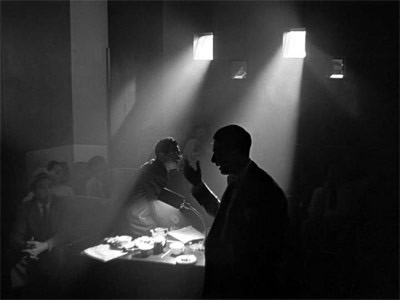The universe of Silent Film allows for something that may be possible in sound film or in literature, and isn’t something we’re aware of as an audience. It’s a natural part of the narrative landscape and doesn’t come off as a clever device.
In films like Citizen Kane (1941) or Rashomon (1950) we’re presented with multiple versions of a particular story, some of which overlap, as seen through the perspective or memory of a number of characters in the story. It’s clear that we’re going from one person’s perspective or memory-tale to another. We go from the story present to that character’s story, then back, then on to another’s, etc. Not only are we aware it’s being done, this type of narrative device is what these films are known for.
The silent comedy one-reeler Not Guilty (1926) directed by Harry Sweet uses this same concept, with the springboard of court testimony to move in and out of the refracted memories. So does Renoir’s hilarious silent feature Les Deux Timides (1928), although only during its courtroom sequence at the beginning.
Silent Film, however, had been using this perspective shifting since the ‘teens, and did so without clueing the audience in to it, and without going in and out from the main perspective of a character in the story. It did this through the use of sub-titles.
You may not even have been aware this was happening. It’s done often enough that if you’ve seen several silent movies, or more, the technique just blended in unconsciously as part of the storytelling.
It is Silent Film’s dreamlike, looser grip on reality, that allows for that kind of latitude. Our right-brain function, or the yin-yang of the left-right hemisphere interaction, allows for this.
There are title cards that present us with exposition, with dialog internal to the scene, with statements about a character’s thoughts that put is inside their mind. Some may identify an object a character is looking at which could be either or both from the objective narration or the internal thoughts of the character.
What makes this unique to Silent Film is that these just happen, and we smoothly make the shift from one perspective to another, without being aware it’s happening. With Silent Film there can be multiple perspectives to the story’s narrative, given to us through text inserted before or during the live-action we’re watching.
The first post in this series is here.
The previous post (#19) to this one is here.
The next post (#21) is here.
[email-subscribers-form id=”1″]

I’d really like you to expand on this subject – a fascinating issue I’ve never thought about.
The next few posts will be covering this. :)